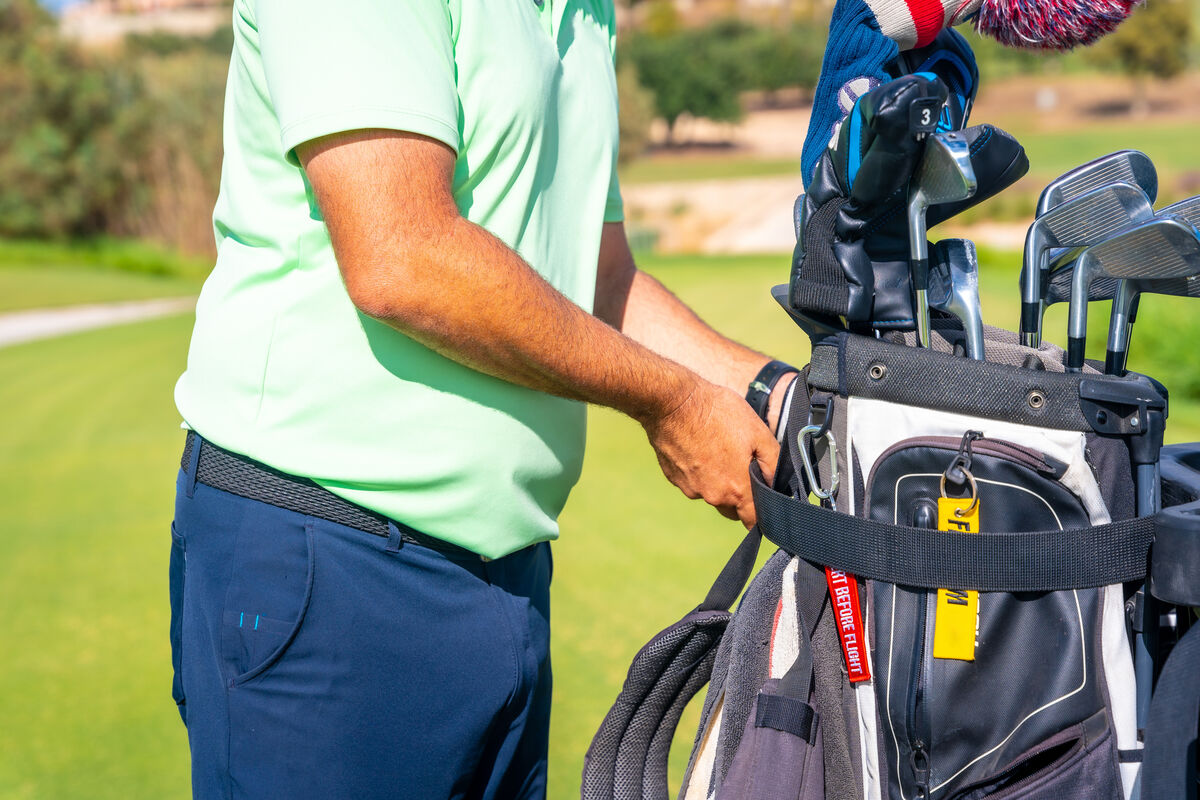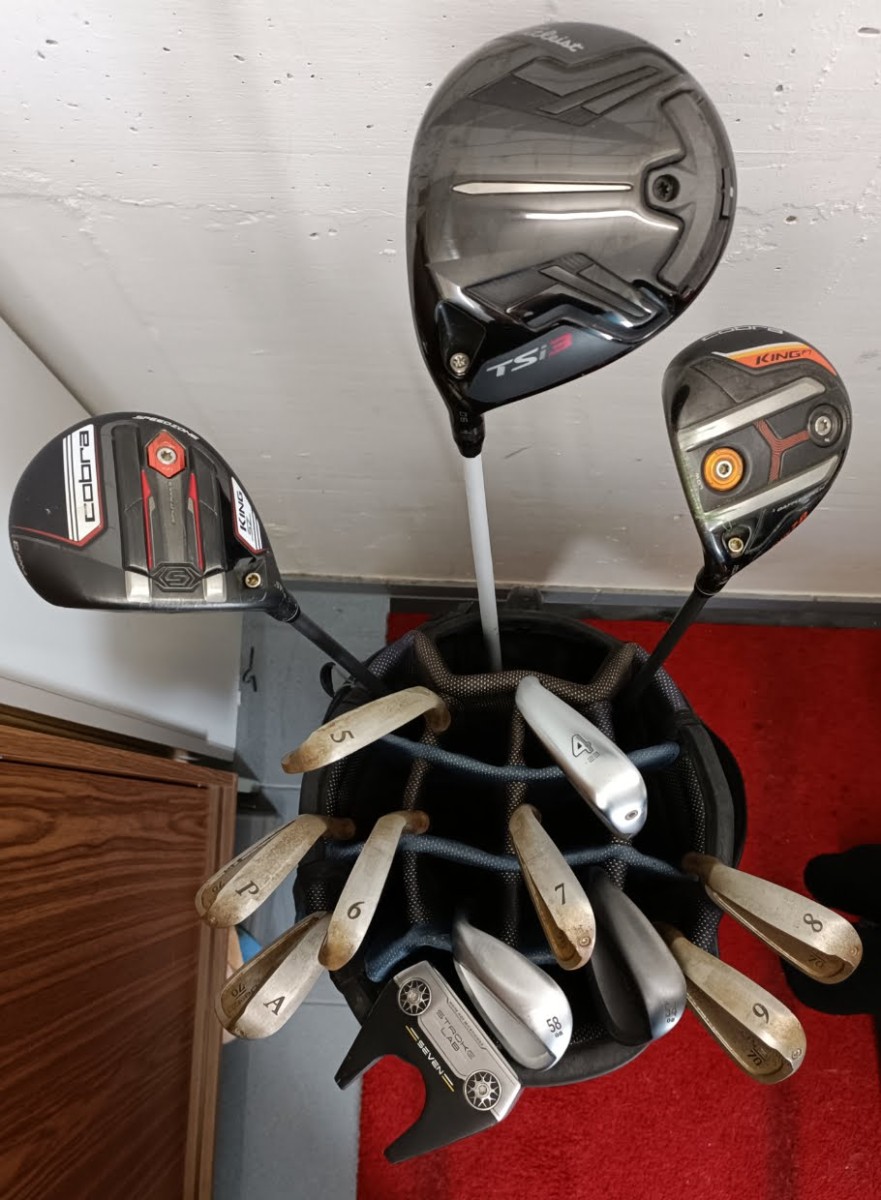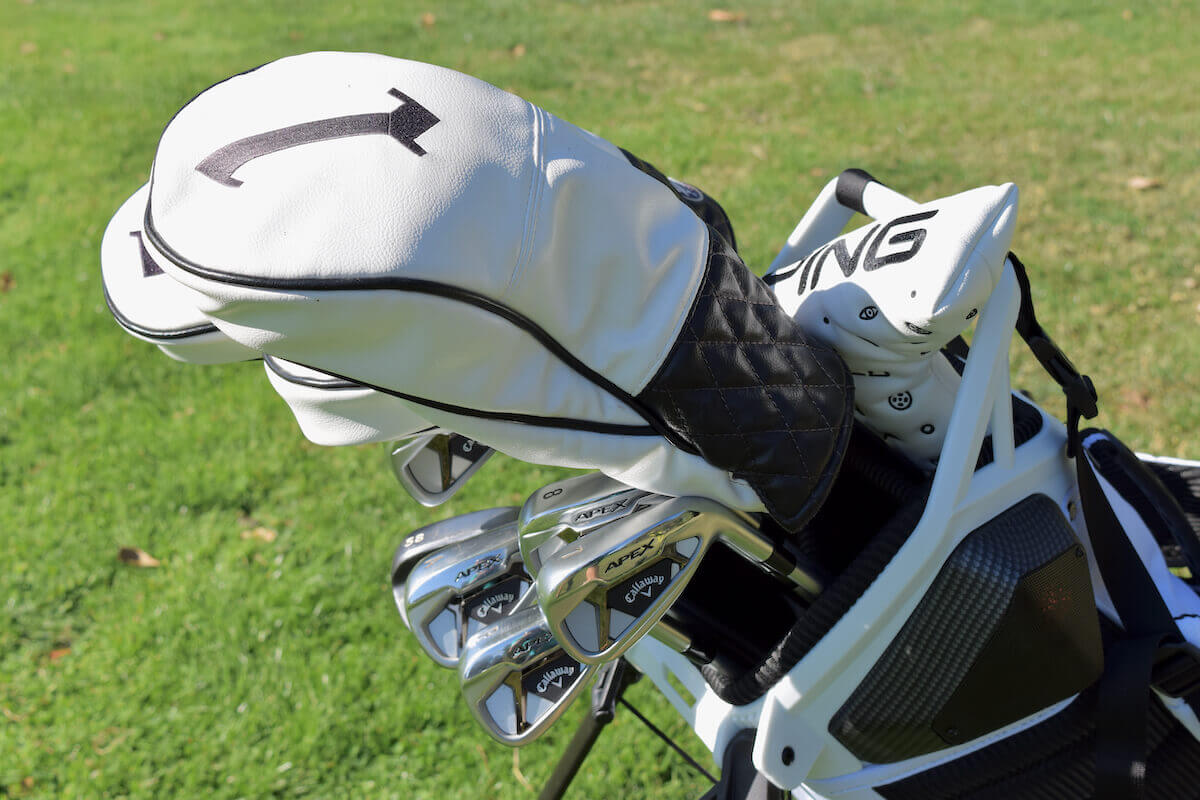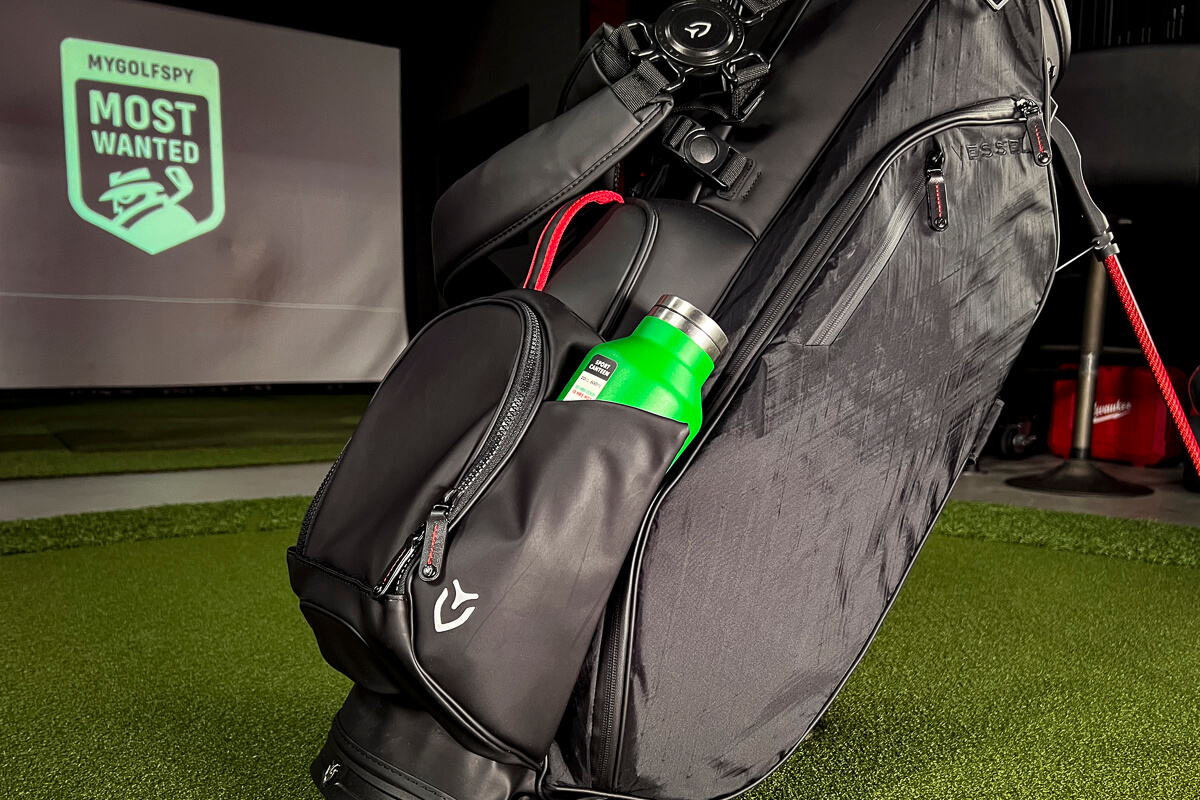
I. Introduction: Unveiling the Secrets of Golf Bag Organization
In the realm of golf, organization is not merely a matter of tidiness; it’s a key to unlocking peak performance and a stress-free golfing experience. Just as a well-oiled machine operates smoothly, an organized golf bag ensures that your clubs are readily accessible, protected from damage, and strategically arranged for optimal weight distribution. Whether you’re a seasoned golfer or a budding enthusiast, mastering the art of golf bag organization will elevate your game and transform your time on the course.
A. The Essence of Organization: Why a Well-Organized Golf Bag Matters
A disorganized golf bag can be a recipe for frustration and hinder your performance. Misplaced clubs, damaged equipment, and wasted time searching for essentials can quickly derail your game. On the other hand, a well-organized golf bag is like having a trusted caddy by your side, ensuring that everything you need is within easy reach and in pristine condition.
B. A Game-Changer for Performance: Enhancing Efficiency, Protecting Clubs, and Ensuring Peace of Mind**
Organization is not just about aesthetics; it’s a strategic advantage. A well-organized golf bag promotes efficiency, allowing you to quickly grab the right club for each shot without fumbling through a jumble of equipment. This saves precious time, reduces frustration, and helps you maintain your rhythm throughout the round.
Moreover, organization safeguards your valuable clubs from damage. Properly stored clubs are less susceptible to scratches, dents, and nicks, extending their lifespan and preserving their performance. This not only protects your investment but also ensures that you’re always playing with clubs in top condition.
Finally, an organized golf bag contributes to a more enjoyable and stress-free golfing experience. Knowing exactly where each club is located eliminates the need for frantic searches and allows you to focus on your game, not on your belongings. This mental clarity can make a significant difference in your overall performance and enjoyment of the sport.
II. Understanding Your Golf Bag: A Comprehensive Overview
Before delving into the intricacies of organization, it’s essential to understand the different types of golf bags and their unique features.
A. Types of Golf Bags: Carry Bags, Cart Bags, Stand Bags, and Travel Bags
-
Carry Bags: Designed for walking the course, carry bags are typically lightweight and compact, featuring shoulder straps for comfortable carrying.
-
Cart Bags: Larger and more spacious, cart bags are ideal for riding in golf carts. They often have numerous pockets and compartments for storing accessories and personal items.
-
Stand Bags: Combining the portability of a carry bag with the storage capacity of a cart bag, stand bags feature retractable legs that allow them to stand upright on the course.
-
Travel Bags: Hard-cased or soft-shelled, travel bags are designed to protect clubs during air travel. They often comply with airline size and weight restrictions.
B. Anatomy of a Golf Bag: Pockets, Dividers, Club Slots, and Carrying Systems
-
Pockets: Golf bags typically have multiple pockets for storing accessories like tees, ball markers, scorecards, and personal items.
-
Dividers: Full-length or individual dividers separate clubs, preventing them from clanging together and causing damage.
-
Club Slots: Individual slots hold clubs securely in place, keeping them organized and preventing them from shifting during transport.
-
Carrying Systems: Carry bags feature shoulder straps for carrying, while cart bags have handles or straps for attaching to carts. Stand bags have retractable legs for stability.

III. Essential Tools for Organization: Equipping Your Golf Bag
Now that you’re familiar with the different types of golf bags and their components, let’s explore the essential tools for creating an organized haven for your golfing gear.
A. Club Head Covers: Protecting Your Clubs from Damage
Club head covers are an investment that pays off in the long run. They shield your clubs from scratches, dents, and damage during transport and storage, extending their lifespan and preserving their performance.
B. Golf Balls: Keeping Your Supply Organized and Accessible
A designated golf ball pocket ensures that your supply of balls is always within easy reach. Choose a pocket that can accommodate multiple balls without overcrowding.
C. Tees: Ensuring You’re Always Ready for the Tee Box
Never get caught without a tee! Keep a dedicated tee holder or compartment stocked with tees, ensuring you’re always prepared for the next drive or iron shot.
D. Cleaning Supplies: Maintaining Your Clubs in Top Condition
Regular club cleaning is crucial for maintaining their performance and preventing rust. Keep a golf towel, brush, and cleaning solution handy to remove dirt, grime, and moisture after each round.
A rangefinder or GPS device can be a valuable tool for precise distance measurement and course navigation. Consider the size and features that best suit your needs and preferences when adding this to your golf bag.
F. Personal Items: Essentials Like Water, Sunscreen, and Snacks
Don’t underestimate the importance of staying hydrated and fueled on the course. Pack a water bottle, sunscreen, and some healthy snacks to keep your energy levels up throughout the round.
IV. Mastering the Art of Club Placement: A Strategic Approach
Now comes the fun part: strategically arranging your clubs for optimal access and weight distribution. Here’s a breakdown of how to organize different types of clubs:
A. Woods: Positioning Your Drivers, Fairways, and Hybrids
Woods, due to their length, are typically placed in the upper portion of the bag, with the driver positioned at the very top for easy access. Fairways and hybrids can be arranged in descending order of length, ensuring you have the right club readily available for various distances.
B. Irons: Organizing Your Irons in Numerical Order or Ascending Loft
Irons are the workhorses of your bag and deserve a well-defined placement strategy. You can organize them numerically (4-iron to wedge) or by loft (ascending loft from pitching wedge to sand wedge), depending on your preference. This allows you to quickly identify and grab the appropriate iron for each shot.
C. Wedges and Putters: Ensuring Easy Access to Your Scoring Clubs
Wedges, crucial for precision around the green, should be positioned near the bottom of the bag for easy retrieval. Some bags have dedicated wedge compartments, while others may require creative placement to ensure easy access. Your putter, the club you’ll use most frequently, deserves a special spot. It’s often stored in a dedicated putter well at the top of the bag for quick access.
D. Considerations for Different Bag Types: Adapting Your Strategy to Your Bag
Remember to tailor your organization strategy to your specific bag type. Carry bags have limited space, so prioritize essential clubs and utilize pockets strategically. Cart bags offer more flexibility, allowing for a wider variety of equipment and a more spread-out club arrangement.
V. Additional Organization Tips for Enhanced Efficiency
Here are some additional tips to optimize your golf bag organization:
A. Utilizing Pockets Effectively: Storing Accessories and Personal Items Strategically
Don’t underestimate the power of pockets! Utilize them to their full potential by designating specific pockets for different items. Tees, ball markers, scorecards, and valuables can each have their designated home within the bag’s pockets.
B. Maintaining Weight Distribution: Balancing Club Placement for Optimal Carrying Comfort
For carry bags, weight distribution is crucial. Place heavier clubs like woods and driver lower in the bag for better balance and reduce strain on your back during your round.
C. Regular Bag Cleaning: Keeping Your Bag Fresh and Presentable
Just like your clubs, your golf bag also needs regular cleaning. Wipe down exterior surfaces with a damp cloth to remove dirt and dust. Empty pockets regularly and air out the bag to prevent musty odors.
VI. Protecting Your Investment: Caring for Your Golf Bag
Your golf bag is an investment that deserves proper care. Here’s how to ensure it lasts for years to come:
A. Proper Storage: Storing Your Bag in a Dry and Protected Area
When not in use, store your golf bag in a dry and protected location, away from direct sunlight or extreme temperatures. This helps prevent warping, fading, or mildew growth.
B. Cleaning and Maintenance: Regular Cleaning and Maintenance to Extend Its Lifespan
Regular cleaning, as mentioned previously, extends the lifespan of your bag. Additionally, address any tears, rips, or broken zippers promptly to prevent further damage.
C. Repairs and Replacements: Addressing Damage Promptly to Prevent Further Issues
Don’t neglect minor tears or broken zippers. Get them repaired promptly to avoid further damage and potential loss of equipment. If your bag is beyond repair, consider investing in a new one that suits your needs and playing style.
VII. Personalizing Your Golf Bag: Adding a Touch of Flair
While organization is key, there’s room for a touch of personal style! Here are some ways to personalize your golf bag:
A. Embellishments and Accessories: Expressing Your Style with Personalized Touches
Add a touch of personality with bag tags, personalized towels, or colorful head covers that reflect your unique style.
B. Matching Your Bag to Your Clubs: Creating a Cohesive and Stylish Look
Consider color coordination when choosing your bag and equipment. Opting for a bag that complements the colors of your clubs can create a sleek and stylish look.